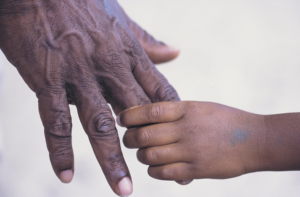The issue of substance abuse in prisons and the subsequent challenges faced by individuals trying to reintegrate into society is a complex and often overlooked aspect of the criminal justice system. Substance abuse can exacerbate existing problems within correctional facilities and create significant hurdles for successful reentry into the community. In this blog, we will delve into the intricacies of substance abuse within prisons, its impact on inmates, and the importance of providing effective support systems for reintegration.
The Prevalence of Substance Abuse in Prisons
Substance abuse is a pervasive issue in prison environments, affecting both the physical and mental well-being of inmates. Many inmates enter prison with pre-existing substance abuse issues, while others develop these problems as a way to cope with the stress, isolation, and monotony of prison life. The availability of drugs within correctional facilities further exacerbates the problem, making it challenging to break the cycle of addiction.
Impact on Inmates
Substance abuse not only undermines an inmate’s physical health but also takes a toll on their mental and emotional well-being. Addiction can contribute to violent behavior, exacerbate existing mental health conditions, and hinder an individual’s ability to engage in productive activities or programs that promote rehabilitation. Moreover, substance abuse often leads to strained relationships with family members and a lack of trust from the wider community.
We have an obligation to treat substance abuse in jails and prisons https://t.co/ZbuKh1cLuf
— Kathy Morse 🌻 (@KathyMorse0914) July 27, 2022
Reintegration: The Importance of a Comprehensive Approach
One of the most significant challenges faced by individuals with a history of substance abuse in prison is their reintegration into society after their release. Successful reentry requires a multifaceted approach that addresses not only the substance abuse issue but also the underlying factors that contributed to criminal behavior. Here are some crucial elements that contribute to effective reintegration:
- Treatment and Rehabilitation: Comprehensive substance abuse treatment programs within prisons can provide inmates with the tools to overcome their addiction and learn healthier coping mechanisms. These programs should include counseling, therapy, and educational opportunities to equip inmates with the skills they need to reintegrate successfully.
- Mental Health Support: Many inmates struggling with substance abuse also have underlying mental health issues. Addressing these issues alongside addiction treatment is essential for breaking the cycle of substance abuse and reducing the risk of recidivism.
- Education and Job Training: Equipping inmates with education and vocational skills can significantly enhance their prospects upon release. Access to education and job training programs not only helps them secure employment but also boosts their self-esteem and sense of purpose.
- Family and Community Engagement: Strengthening family ties and involving the community in the reintegration process is vital. Family support can provide emotional stability and reduce the feelings of isolation that often contribute to substance abuse.
- Continuum of Care: Reentry support should not end upon release. A well-structured continuum of care that includes access to housing, healthcare, and ongoing counseling can help former inmates navigate the challenges of reintegration and maintain their recovery.
Are you looking for a FREE, confidential wellness and recovery support program for alcohol and drugs? Start planning your recovery today with Breaking Free!
— HKPR District Health Unit (@HKPRDHU) June 16, 2023
For more info, visit 💻 https://t.co/9kBD24rGXA or ☎️ 833-325-1338 toll-free pic.twitter.com/H4FQWmOr94
Breaking the Cycle: A Call to Action

Addressing substance abuse in prisons and ensuring successful reintegration into society requires a collaborative effort involving government agencies, nonprofit organizations, healthcare providers, and the community at large. Investment in evidence-based treatment programs, increased mental health resources, and comprehensive reentry support services can contribute to breaking the cycle of substance abuse and reducing recidivism rates.
As we strive for a more just and rehabilitative criminal justice system, recognizing the importance of addressing substance abuse and providing effective support for reintegration becomes paramount. By breaking the chains of addiction and fostering a system that values rehabilitation, we can pave the way for brighter futures for individuals transitioning from incarceration back into society.
To read more stories of hope and transformation, come back every week at www.getfreeandstayfree.com and follow us on social media by clicking on the icons below!




